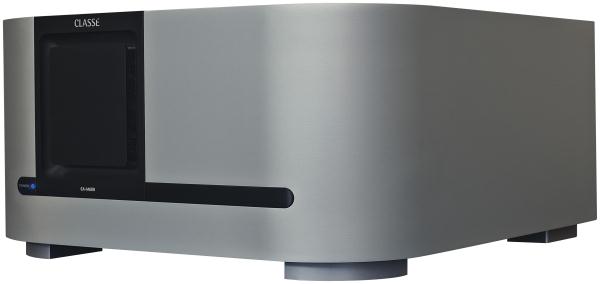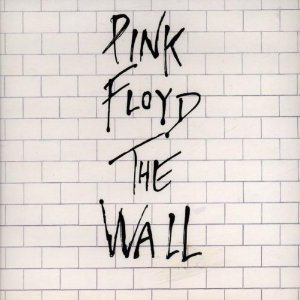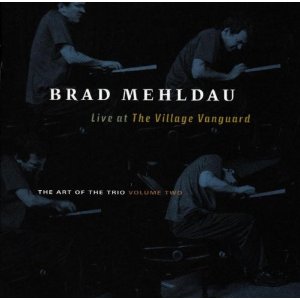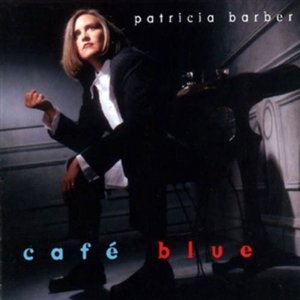The Classe Audio CA-M600 Mono Amps
| The Classe Audio CA-M600 Mono Amps |
| Brawn and Brain |
|
|
|
October, 2011 |

Classe’ Audio has been one of the most consistent manufacturers of high-end audio components for so long that when they announce a new component’s arrival it almost elicits a ho-hum response. Yes, another new Classe’ Audio product. Sure, it will be beautifully built with clean lines and sculpted edges. It will possess more than enough power and will be built to last a millennium. Been there, done that. So when Dave Nauber, Classe’s President, told me that they were coming out with the CA-M600, a new “Delta Series” 600 watt mono amp to replace their venerable CA-M400 mono amps, my initial thought was… why? Is there really that much of a difference between a 400 watt amp and a 600 watt amp for home stereo listening purposes? As I have found out, yes, there is.
The CA-M600 features three main enhancements from previous Classe’ designs. First, there’s a new miniaturized driver-stage circuit, which is darn near noise and distortion free and delivers more precise signal control than previous designs. Second, amplification now occurs on a six-layer circuit board, shortening the signal path for greater time-domain performance and improved transparency. Finally, the most important new Delta series innovation is the inclusion of Classés ICTunnel™ technology. ICTunnel™ (aka Icy Tunnel) is an active cooling system that uses sensors and microprocessors to monitor and control the amp’s operating temperature. This technology was inspired by million-dollar medical and laser imaging equipment. Once the amps warms up to room temperature (usually about 10-15 minutes) it remains at that temperature no matter how hard you drive them. This ensures stable and optimized performance and component reliability.
Externally, the CA-M600 looks exactly like its 400 watt predecessor and offers excellent user friendly operation. The chassis are made of a massive-looking, soft-silver machined aluminum with black anodized accent pieces. The front corners are beautifully rounded to give the amps their sleek and unique look. There is a front panel “Standby” button and LED indicator. This button will toggle the amp between operate and standby modes. Even while in standby mode the amp is ready to respond to system controls from IR input, CAN Bus, or RS-232 remote connections on the back of the amps. A beautifully sculpted row of heat sinks adorns each side. On the rear are two pairs of speaker terminals, balanced (XLR) and unbalanced (RCA) inputs and of course a standard IEC mains input for AC power cords. There are also a host of other connections (including those already mentioned) for system integration and diagnostic services, including a USB Control Port and DC trigger input and output.
The System
I had a wide variety of components on hand to use with these amps. My digital sources were an Apple TV device, which allowed me to stream my iTunes library and enjoy some internet radio programming, an Esoteric SA-50 SACD player, an OPPO Digital DV-980H universal disc player, and a Citypulse Audio DA-2.03s USB DAC. For analog I used the dazzling new George-Warren Precision Sound turntable with Moth Arm2 and Benz Micro Ace cartridge and a Clearaudio Smartphono phono preamp. Though both the Esoteric and the Citypulse had outputs on them that I could have used to connect to the amps, I decided to use the XLH SL-11XS preamp for most of the listening sessions. Loudspeakers were primarily the Escalante Freemont and Dynaudio Sapphire. The whole system was connected with Entreq Audio Konstantin 09 cables.
Listening To Music The first CD I listened to was the 1994 digitally re-mastered version of Pink Floyd’s epic, The Wall [Capitol]. I used the balanced outputs on the Esoteric SA-50 directly into the CA-M600s since the SA-50 has a built-in digital volume control. “Goodbye Blue Sky” sounded awesome through this system. The top to bottom presentation was very detailed and spacious. The midbass was very well focused and tuneful and the nuances of the acoustic guitar were nicely fleshed out. The same could be said of “Comfortably Numb” and “The Show Must Go On.” The musicianship on this recording has always been one of its hallmarks and these amps provide enough power to render it with natural scale and imaging. But at lower volume levels there was a noticeable (though barely) hum that I just could not shake. I had a slight suspicion that it may have come from the output of the SA-50 but I was never sure. Oddly enough when I inserted the XLH preamp into the system and ran it between the SA-50 and the CA-M600s the hum was gone altogether even as increased and decreased the volume level, weird. I’ve been known to have odd grounding anomalies from time to time so I didn’t dwell on it. Besides, it didn’t affect my music enjoyment.
The first CD I listened to was the 1994 digitally re-mastered version of Pink Floyd’s epic, The Wall [Capitol]. I used the balanced outputs on the Esoteric SA-50 directly into the CA-M600s since the SA-50 has a built-in digital volume control. “Goodbye Blue Sky” sounded awesome through this system. The top to bottom presentation was very detailed and spacious. The midbass was very well focused and tuneful and the nuances of the acoustic guitar were nicely fleshed out. The same could be said of “Comfortably Numb” and “The Show Must Go On.” The musicianship on this recording has always been one of its hallmarks and these amps provide enough power to render it with natural scale and imaging. But at lower volume levels there was a noticeable (though barely) hum that I just could not shake. I had a slight suspicion that it may have come from the output of the SA-50 but I was never sure. Oddly enough when I inserted the XLH preamp into the system and ran it between the SA-50 and the CA-M600s the hum was gone altogether even as increased and decreased the volume level, weird. I’ve been known to have odd grounding anomalies from time to time so I didn’t dwell on it. Besides, it didn’t affect my music enjoyment.
 The next two songs I enjoyed were from Brad Mehldau’s CD,Art of Trio 2: Live at the Village Vanguard [Warner Bros]. “It’s Alright With Me” and “Countdown,” are two very different types of song with the former being more of a ballad and the latter more up tempo and dynamic. But they were both rendered with equal levels of instrument sharpness and soundstage airiness. This consistency in performance is something that Classe’ really does well.
The next two songs I enjoyed were from Brad Mehldau’s CD,Art of Trio 2: Live at the Village Vanguard [Warner Bros]. “It’s Alright With Me” and “Countdown,” are two very different types of song with the former being more of a ballad and the latter more up tempo and dynamic. But they were both rendered with equal levels of instrument sharpness and soundstage airiness. This consistency in performance is something that Classe’ really does well.
I wanted to throw something really dynamic at these amps with my next recording choice by going to the soundtrack from The Planet of the Apes [Sony Classical]. Danny Elfman’s orchestral score is loaded with thunderous bass and rich dynamics and has been known to make more than a few amps clip in my home. This was just the thing I needed to see how well these amps could drive my Escalante Design Fremonts and their isobarically loaded 12” woofers. Track 11, “Preparing for Battle” is a rousing and exciting piece that demands speed, detail, and the ability to throw a wide and deep soundstage in order to be rendered properly. The CA-M600s didn’t even break a sweat with this track, but my Fremonts did, and on particularly exciting bass heavy passages caused the woofers to make a bit of a “farting” sound. Alas, my dear Fremonts may be beginning to show a bit of age… nah, I just needed to turn the volume down a bit.
A few weeks later a new turntable from George Warren Precision Sound arrived. Fitted with a Moth Arm2 and Benz Micro Ace cartridge, and running through a Clearaudio Smartphono phonostage, the table was immediately pressed into service so that I could include some vinyl in my listening sessions.
 During the 2010 CES I picked up a copy of a 45RPM pressing of Patricia Barber’s Café Blue[MFSL 3-45002]. This album has detail, dynamics, imaging, and soundstaging galore. This is one of those recordings that gets used a lot in show demos and rightfully so. But this particular pressing is truly exceptional. The George-Warren table provides pitch perfect presentation and the CA_M600s take full advantage of it. There are those who feel that a system is only as good as its source, but what takes that system to the next level is amplification that faithfully replicates not just the music from the source but the experience of making of that music. On “The Thrill is Gone,” Barber’s singing is portrayed with passion and heart. The level of resolution provided by this amp allows you to hear and feel her performance. And for sheer dynamics, you gotta hear “Nardis.” The piano and drum performances on this song are thrilling. The piano keys get pounded almost as hard as the drum kit does and some of the pops of the snare drums can startle you. You can hear deep into this song and get all of the impact and decay of those thwacks and cymbal crashes. The CA-M600s breathe life and realism to this performance.
During the 2010 CES I picked up a copy of a 45RPM pressing of Patricia Barber’s Café Blue[MFSL 3-45002]. This album has detail, dynamics, imaging, and soundstaging galore. This is one of those recordings that gets used a lot in show demos and rightfully so. But this particular pressing is truly exceptional. The George-Warren table provides pitch perfect presentation and the CA_M600s take full advantage of it. There are those who feel that a system is only as good as its source, but what takes that system to the next level is amplification that faithfully replicates not just the music from the source but the experience of making of that music. On “The Thrill is Gone,” Barber’s singing is portrayed with passion and heart. The level of resolution provided by this amp allows you to hear and feel her performance. And for sheer dynamics, you gotta hear “Nardis.” The piano and drum performances on this song are thrilling. The piano keys get pounded almost as hard as the drum kit does and some of the pops of the snare drums can startle you. You can hear deep into this song and get all of the impact and decay of those thwacks and cymbal crashes. The CA-M600s breathe life and realism to this performance.
At $14,000 for a pair, these amps are not cheap yet they are a flat out steal compared other offerings of equal quality. Last year I reviewed the $50,000 a pair Vitus Audio SM-010 mono amps. The Vitus amps put out only 40 watts of Class A power (100 watts Class A/B), but it’s 40 of the sweetest, most powerful sounding watts I’ve ever heard. By comparison, the Classe’ amps at 600 watts Class A/B can rival the Vitus amps musically and probably drive a greater variety of speakers. When you consider the fact that the Vitus amps are more than three times the cost of the Classe’ amps, you begin to appreciate just how much of a bargain they are.
Conclusion
Some nice technological advances, an increase in power output, increased product reliability and wonderful sonics means that the Classe’ Audio CA-M600 mono amps will continue to keep Classe’ as one of the premier high-end audio component manufacturers around. There’s nothing ho-hum about that. Enthusiastically recommended!

![]()
Specifications
Frequency response 1 Hz – 100 kHz, -3dB
Output power 600W rms into 8Ω (27.8 dBW)
1200W rms into 4Ω (27.8 dBW)
Harmonic Distortion <0.002% at 1 kHz balanced
<0.004% at 1 kHz single ended
Peak Output Voltage 226V peak to peak, 80V rms no load
206V peak to peak, 73V rms into 8Ω
Input Impedance 50kΩ balanced / single ended
Voltage gain 29dB balanced / single ended
Input level at clipping 2.86V rms balanced / single ended
Intermodulation Distortion >100dB below fundamental into 8Ω balanced / single ended
>90dB below fundamental into 4Ω balanced / single ended
Signal to Noise Ratio -120dB at peak output into 8Ω
Measurement Bandwidth: 22 kHz
Output impedance 0.03Ω @ 1 kHz
Standby power consumption < 1W
Rated power consumption 440W @ 1/8th power into 8Ω
Width 17.5” (444mm)
Depth 17.52” (445mm)
Height 8.78” (223mm)
Gross weight 100 lb (45.4 kg)
Net weight 88 lb (39.9 kg)
Mains voltage Specified on rear panel
Price: $14,000 per pair
Address
Classe’ Audio
5070 Francois Cusson
Lachine, QUE H8T 1B3
Canada
Phone 514-636-6384
Email – cservice@classeaudio.com
Website: http://www.classeaudio.com
![]()
Don’t forget to bookmark us! (CTRL-SHFT-D)
Stereo Times Masthead
Publisher/Founder
Clement Perry
Editor
Dave Thomas
Senior Editors
Frank Alles, Mike Girardi, Russell Lichter, Terry London, Moreno Mitchell, Paul Szabady, Bill Wells, Mike Wright, and Stephen Yan,
Current Contributors
David Abramson, Tim Barrall, Dave Allison, Ron Cook, Lewis Dardick, John Hoffman, Dan Secula, Don Shaulis, Greg Simmons, Eric Teh, Greg Voth, Richard Willie, Ed Van Winkle, Rob Dockery, Richard Doron, and Daveed Turek
Site Management Clement Perry
Ad Designer: Martin Perry





Be the first to comment on: The Classe Audio CA-M600 Mono Amps